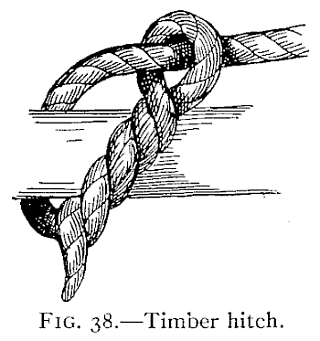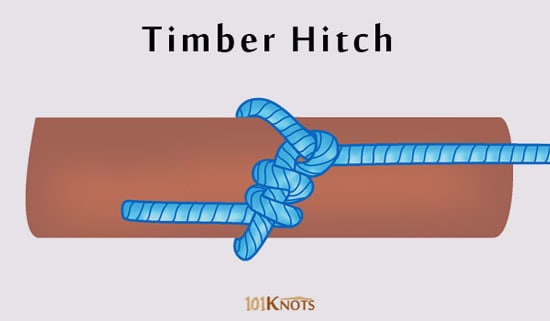In use as a Timber hitch, the serpentine tail of the dead end just gives a friction grip on the dod of timber being hauled. The haul is assisted and taken by means of a half hitch placed some distance apart , in the line of haul, from the spot where the Timber Hitch was placed. Thats how it works as a timber hitch. Its a two-part assembly.A timber hitch gives us another knot that I can see being used. If a (very pliant) withy is taken around a bundle of sticks and then formed into a timber hitch, and, if the loose end is then tightened to tighten up the bundle, then the loose end can be tucked under itself several times to create a timber hitch loop on each side.
But , when you refer to hauling tight the "loose"end, I believe that if you try this on something of solid substance, then you will find that, when tensioned, it is just not possible to tuck that loose end in the way you describe....I seem to recall a very long drawn out and tedious thread on the IGKT site some years back, about this same misapprehension.....I have to say that , in following the convolutions involved, my reading spectacles went to sleep of their own accord long before the end and so I dunno just what conclusions were made, if any were made. It was around this time I decided that a venture into stamp collecting offered the involvement of many more brain cells.
But, do try out your ideas, with various materials and see how it develops..I feel sure that you will eventually settle on a binding method much more efficient than the method you describe.
Regards All
Ceeg
Another footnote: just think of the Timber hitch as being a way of of stoppering the idle end of a half hitch...its that half hitch that expidites the hauling force
Last edited:


